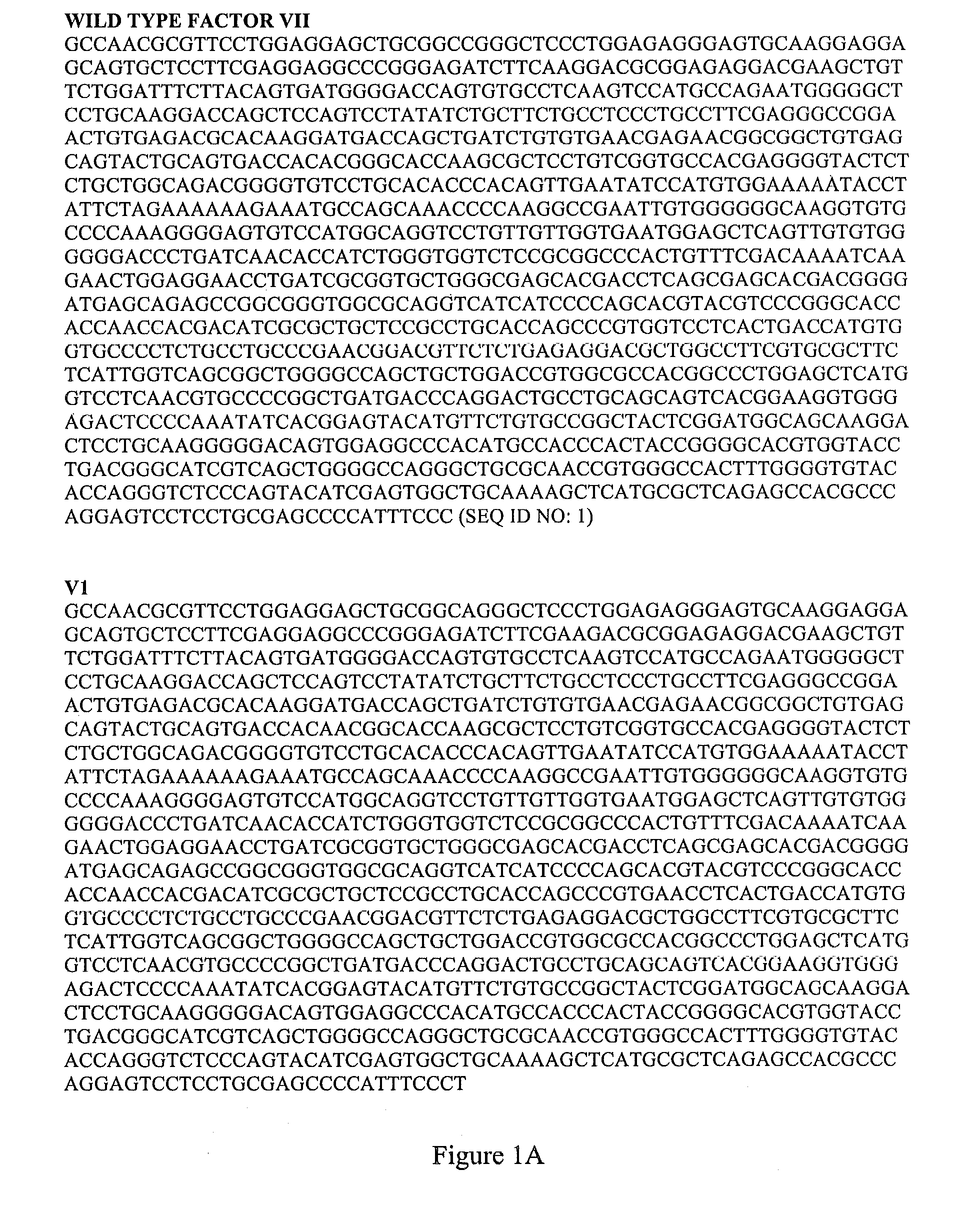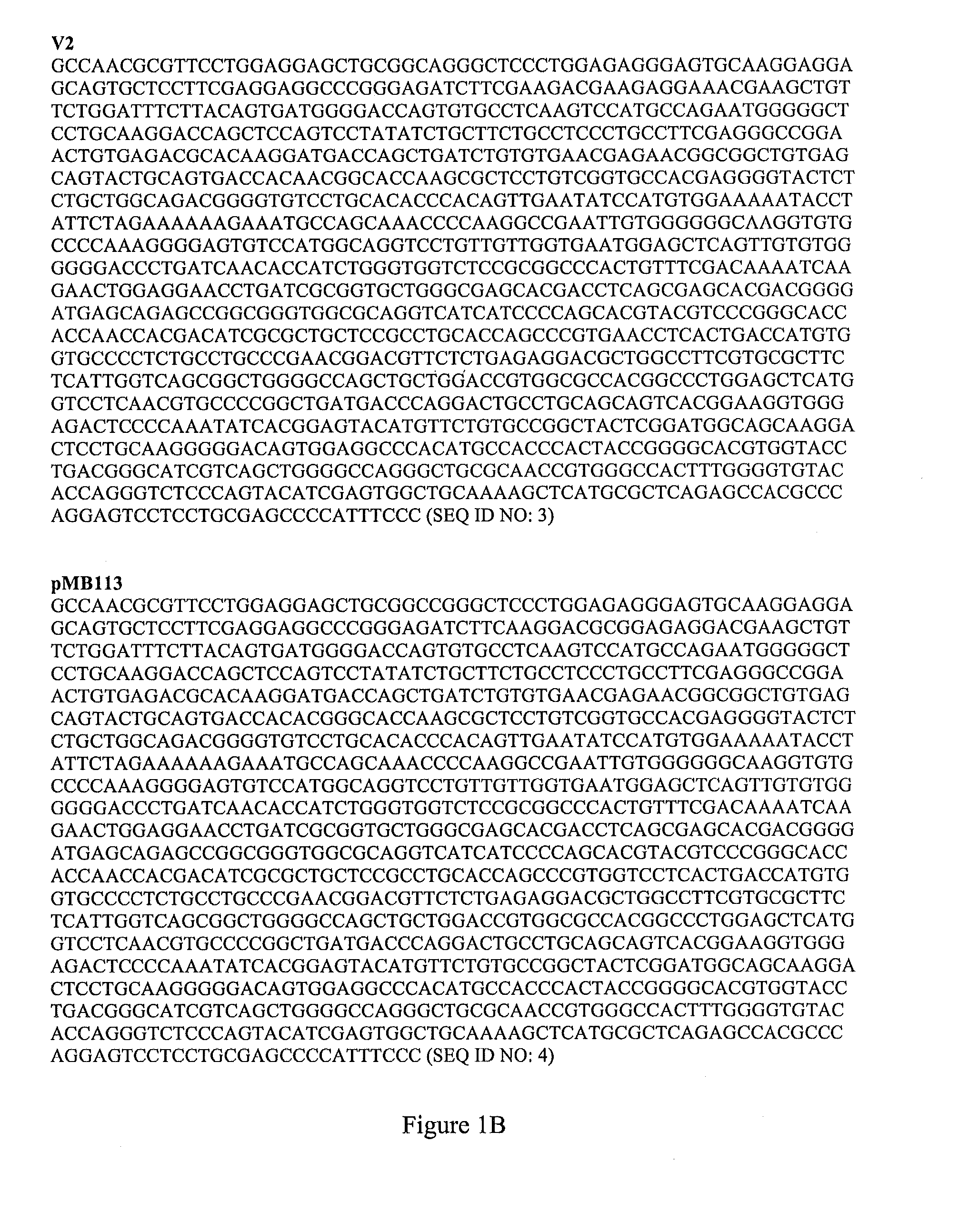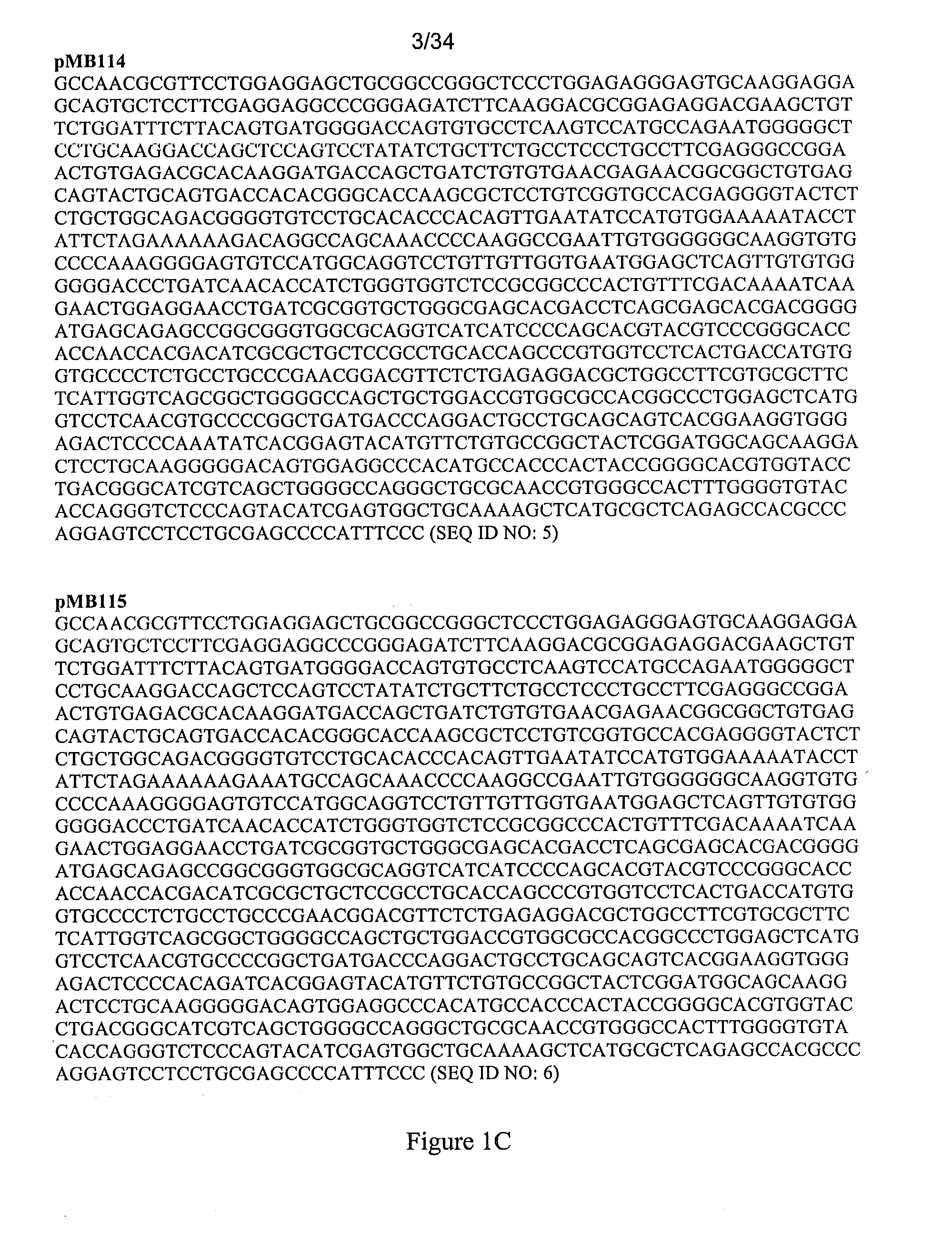Short-acting factor vii polypeptides
a short-acting, polypeptide technology, applied in the direction of peptide/protein ingredients, drug compositions, extracellular fluid disorder, etc., can solve the problems of increasing undesirable thromboembolic events from use of this molecule, major bleeding problems, etc., to reduce the chance of thrombotic events, enhance clearance, and alter the glycosylation pattern
- Summary
- Abstract
- Description
- Claims
- Application Information
AI Technical Summary
Benefits of technology
Problems solved by technology
Method used
Image
Examples
examples
Methods to Obtain Desialylated Factor VII Polypeptides
[0090]Numerous methods were employed to generate desialylated Factor VII polypeptides (both wild-type and variant), including enzymatic desialylation of the polypeptide, production of the Factor VII polypeptide in a sialylation-deficient cell line, and co-expression of Factor VII and a sialidase in a recombinant cell.
Generation of Sialic Acid Deficient Cell Line
[0091]Endogenous sialic acid is synthesized in mammalian cells involving a complex pathway consisting of 32 enzymes (Wickramasinghe and Medrano 2011). The biosynthesis of sialic acid starts in cytosol converting UDP-N-acetylglucosamine (UDP-GlcNAc) to Neu5Ac involving several enzymes, such as UDP-N-acetylglucosamine-2-epimerase / Nacetylmannosamine kinase (GNE), sialic acid 9-phosphate synthase (NANS), and sialic acid 9-phosphate phosphatase (NANP). Neu5Ac in cytosol is imported into the nucleus through nuclear pores and converted into CMP-Neu5Ac by an enzyme called CMP-Sia ...
experiment 1
[0094]This experiment is designed to determine whether the mutation in the gene of CMP-sialic acid transporter, such as in the case of Lec2 cells, results in expressed recombinant protein (e.g., Factor VII) deficient in sialylation in comparison with the same protein expressed from normal CHO cells.
[0095](1) Testing the expression of recombinant protein, such as Factor VII, from Lec2 cells. Expression vectors containing a Factor VII variant gene (e.g., pMB117 and pMB121) are transfected into Lec2 cells and normal CHO cells under normal transfection conditions. Expression levels of Factor VII from cell culture of these cells is monitored by a Factor VII activity assay. The culture of transfected cells is scaled-up and the culture conditioned media is harvested for the purification of Factor VII.
[0096](2)Testing the sialic acid content of purified Factor VII expressed from Lec2 cells in comparison to the same protein expressed from normal CHO cells. Purification of Factor VII from the...
experiment 2
[0097]In order to produce a manufacturing cell line to express a Factor VII variant with no sialic acid on the expressed recombinant proteins, gene deletion methods are used targeting the CMP-sialic acid transporter gene to modify a cell line that expresses Factor VII (e.g., a CHO cell line). In order to completely inhibit the sialylation in the cell, other targets, such as UDP-N-acetylglucosamine-2-epimerase / Nacetylmannosamine kinase (GNE), sialic acid 9-phosphate synthase (NANS), sialic acid 9-phosphate phosphatase (NANP), and CMP-Sia synthase (CMAS) as listed above in the introduction, optionally can also be deleted to enhance the inhibition of the CMP-Neu5Ac biosynthesis which provides the substrate for the CMP-sialic acid transporter.
[0098]Two gene deletion technologies, TALE nucleases (TALENs) from Life Technologies and ZFP Nucleases (ZFNs) from Sangamo BioSciences / Sigma-Aldrich, can be used for conducting the knockout of CMP-sialic acid transporter gene, or the knockout of mu...
PUM
| Property | Measurement | Unit |
|---|---|---|
| molecular weight | aaaaa | aaaaa |
| concentration | aaaaa | aaaaa |
| mass ratio | aaaaa | aaaaa |
Abstract
Description
Claims
Application Information
 Login to View More
Login to View More - R&D
- Intellectual Property
- Life Sciences
- Materials
- Tech Scout
- Unparalleled Data Quality
- Higher Quality Content
- 60% Fewer Hallucinations
Browse by: Latest US Patents, China's latest patents, Technical Efficacy Thesaurus, Application Domain, Technology Topic, Popular Technical Reports.
© 2025 PatSnap. All rights reserved.Legal|Privacy policy|Modern Slavery Act Transparency Statement|Sitemap|About US| Contact US: help@patsnap.com



